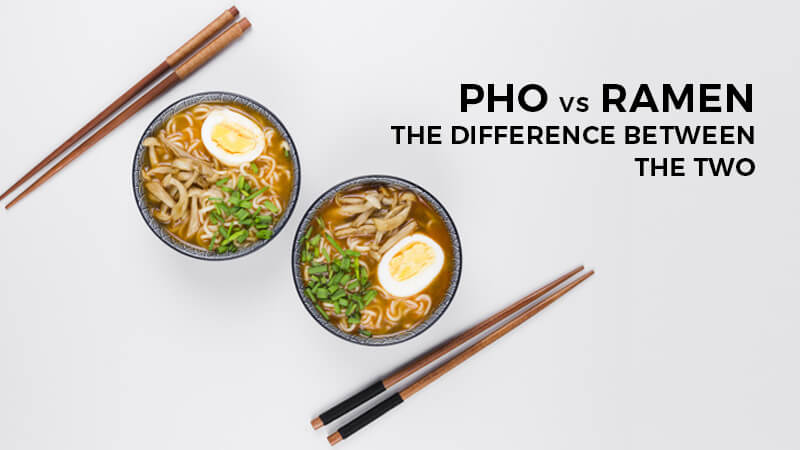Where Do Perogies Come From? (Updated 2025)

Are you curious about where do perogies come from? Stick around as we share the answer and more…
Perhaps one of the most popular Eastern European dishes enjoyed throughout the world is perogies. As a type of dumpling that envelops irresistible goodness inside, perogies deserve wide acclaim.
They have a delicious medley of flavors, and also bring comfort, especially during cold, winter nights. What makes perogies a perennial favorite is that they serve as the ultimate comfort food. They are also quite versatile.
Although traditionally boiled, you can also enjoy them fried, baked, and even eaten cold. The filling and comforting dish stand as one of the most famous on the globe.
However, despite their popularity, little is known about their true origins.
In this article, we’ll explore the rich and fascinating history of perogies. Read on to learn more about these Polish dumplings.
What Is a Pierogi?
First of all, perogies, otherwise called pierogi or perogy, is a traditional Polish dumpling fashioned in small, half-moon portions.
Made from chewy wheat-based dough, perogies come with different types of fillings, including sweet and savory varieties.
After being filled and shaped, perogies are cooked either by boiling or frying.
Where Do Perogies Come From?
Perogies remain a traditional Polish staple. However, a number of origin stories exist and much of the history of this dish remains a mystery.
One of the most famous origin stories explains that they arrived on Polish shores around the 13th century.
The dish reportedly has roots from the Far East. This story credits the Hyacinth of Poland, also known as Saint Hyacinth or Jacek Odrowaz, the patron saint of perogies, as the main reason these dumplings came to Poland.
The legend states that Hyacinth of Poland brought over the dish from Ukraine, then called Kievian Rus, in order to feed the hungry people in Krakow in the aftermath of the Tatar invasion.
In an interesting twist, another tale surrounds the heroic figure of Saint Hyacinth. This legend states that Saint Hyacinth, then a Polish priest, saved the crops after visiting the town of Koscielec.
The town’s crops were said to be ravaged, thereby putting people’s lives in danger due to starvation. In an attempt to bring light to the situation, Hyacinth and the villagers kneeled down and prayed.
The next day, crops grew back, and to show their appreciation for the divine intervention, perogies were created in Hyacinth’s honor.
Other stories point to Marco Polo bringing the chewy dumplings over to the country from China to Italy.
Other people maintain that they came over to Poland from Turkey.
Proto-Slavic Origins
Despite the different stories, we know one thing for sure: perogies have Proto-Slavic origins. The name itself shows this, the word ‘pir,’ meaning ‘a feast.’
The word ‘pir’ dates back to the 17th century, but the dish’s existence may have made its way to Polish shores much earlier. Initially known as food for peasants, perogies have since transitioned into food fit for everyone.
Today, they hold a position as the national dish of Poland. The Polish consume them on a daily basis, more so on special occasions and gatherings such as Christmas.
Most perogies today come in different flavors and textures. Traditional ones, called Ruskies or Russian pierogies, contain sauerkraut, mashed potatoes, and cream cheese.
Other dumplings hold minced meat, mushrooms, sauerkraut, potatoes, caramelized onions, cheese, spinach, and more.
If you plan to have some for dinner, we have another article with ideas on what side dishes to serve with perogies.
Perogies and the Rest of the World
Beyond Poland, perogies have also gained popularity in the United States and in Canada. Polish and Ukrainian immigrants brought them over to the U.S. and neighboring countries, especially in key locations such as Buffalo, Chicago, and Detroit.
These dumplings have their own celebrations in other parts of the United States, with festivals held in their honor in Lawrenceville, Georgia, and Whiting, Indiana.
Pittsburgh famously bears the title ‘America’s Pierogi Capital,’ with the Pittsburgh Pirates sponsored by the largest pierogi manufacturer in the country.
In Canada, a statue of a perogy pierced on a fork, called the Giant Perogy, can be found on the roadside of a small village in Glendon, Alberta, which the town erected in 1993.
They are also widely consumed throughout Europe, particularly in Poland’s neighboring countries of Belarus, Germany, Slovakia, and Ukraine.
The Bottom Line
The rich stories surrounding the creation of perogies undoubtedly make this dish more appealing. Now that you know where perogies come from, their historical background, and their undeniably tasting fillings, you hopefully have a deeper understanding and appreciation for this Polish favorite.
PrintWhere Do Perogies Come From
Are you curious about where do perogies come from?
Stick around as we share the answer and more…
- Yield: 1
- Category: Origin
- Cuisine: Polish
Ingredients
- Perogies
Instructions
- First of all, perogies, otherwise called pierogi or perogy, is a traditional Polish dumpling fashioned in small, half-moon portions. Made from chewy wheat-based dough, perogies come with different types of fillings, including sweet and savory varieties. After being filled and shaped, perogies are cooked either by boiling or frying.
- The dish reportedly has roots from the Far East. This story credits the Hyacinth of Poland, also known as Saint Hyacinth or Jacek Odrowaz, the patron saint of perogies, as the main reason these dumplings came to Poland.
- The legend states that Hyacinth of Poland brought over the dish from Ukraine, then called Kievian Rus, in order to feed the hungry people in Krakow in the aftermath of the Tatar invasion.
- In an interesting twist, another tale surrounds the heroic figure of Saint Hyacinth. This legend states that Saint Hyacinth, then a Polish priest, saved the crops after visiting the town of Koscielec.
- The town’s crops were said to be ravaged, thereby putting people’s lives in danger due to starvation.
- In an attempt to bring light to the situation, Hyacinth and the villagers kneeled down and prayed. The next day, crops grew back, and to show their appreciation for the divine intervention, perogies were created in Hyacinth’s honor.
- Despite the different stories, we know one thing for sure: perogies have Proto-Slavic origins.
you may also like
well hello there!

Hi, I'm Linda thanks for stopping by! We're so happy you're here. If you're a foodie and love to cook from home - you're in the right place..
LEARN MORE
free newsletter
Join the mailing list and receive our free newsletter!
recent posts
let's be social
search site
Recipe Marker
Recipe Marker provides you with the best information about home cooking tips, recipes, ingredient substitutes and more. Check out our blog to see the latest articles.
Copyright © 2024 Recipemarker.com | All Rights Reserved | Privacy | Disclaimer | Contact










